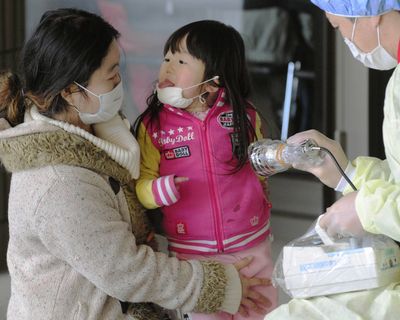Power lines expected to be finished today
Nuclear plant’s cooling systems may restart

YAMAGATA, Japan – Smoke billowed from a building at Japan’s crippled nuclear power plant today as emergency crews worked to reconnect electricity to cooling systems and spray more water on overheating nuclear fuel at the tsunami-ravaged facility.
Four of the troubled Fukushima Dai-ichi plant’s six reactor units have seen fires, explosions or partial meltdowns in the week since the tsunami. While the reactor cores where energy is generated are a concern, water in the pools used to store used nuclear fuel are also major worries. Water in at least one fuel pool – in the complex’s Unit 3 – is believed to be dangerously low, exposing the stored fuel rods. Without enough water, the rods may heat further and spew out radiation.
“We see it as an extremely serious accident,” Yukiya Amano, the head of the U.N.’s International Atomic Energy Agency, told reporters today just after arriving in Tokyo. “This is not something that just Japan should deal with, and people of the entire world should cooperate with Japan and the people in the disaster areas.”
Frantic efforts were made Thursday to douse a number of units with water, and authorities were preparing to repeat many of those efforts.
Today’s smoke came from the complex’s Unit 2, and its cause was not known, the nuclear safety agency said.
Crucial to the effort to regain control over the Fukushima plant is laying a new power line to the plant, allowing operators to restore cooling systems. The operator, Tokyo Electric Power Co., missed a deadline late Thursday but today workers hoped to complete the effort in 10 to 15 hours, said nuclear safety agency spokesman Minoru Ohgoda.
But even with electricity the utility is not sure the cooling systems will still function.
The official death toll from the disasters stood at 6,405 as of Friday morning, with 10,259 missing, the national police agency said.
On Thursday, military helicopters dumped thousands of gallons of water from huge buckets onto Unit 3. Officials announced today they would not continue with the helicopter drops.
Police said more than 452,000 people made homeless by the quake and tsunami were staying in schools and other shelters, as supplies ran short.